One to One Functions - Graph, Examples | Horizontal Line Test
What is a One to One Function?
A one-to-one function is a mathematical function where each input corresponds to only one output. That is to say, for each x, there is only one y and vice versa. This implies that the graph of a one-to-one function will never intersect.
The input value in a one-to-one function is the domain of the function, and the output value is known as the range of the function.
Let's study the pictures below:
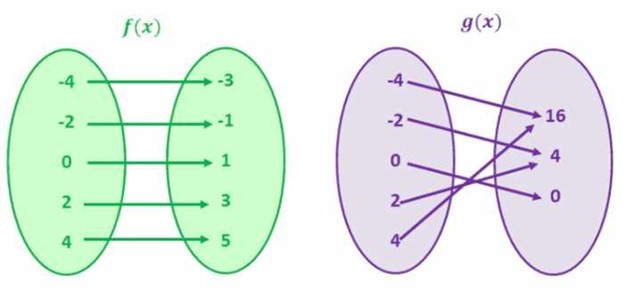
For f(x), each value in the left circle correlates to a unique value in the right circle. Similarly, every value on the right correlates to a unique value in the left circle. In mathematical words, this implies every domain has a unique range, and every range holds a unique domain. Hence, this is a representation of a one-to-one function.
Here are some other representations of one-to-one functions:
-
f(x) = x + 1
-
f(x) = 2x
Now let's study the second example, which exhibits the values for g(x).
Pay attention to the fact that the inputs in the left circle (domain) do not own unique outputs in the right circle (range). For instance, the inputs -2 and 2 have identical output, in other words, 4. In conjunction, the inputs -4 and 4 have equal output, i.e., 16. We can discern that there are equivalent Y values for multiple X values. Thus, this is not a one-to-one function.
Here are additional representations of non one-to-one functions:
-
f(x) = x^2
-
f(x)=(x+2)^2
What are the characteristics of One to One Functions?
One-to-one functions have these characteristics:
-
The function owns an inverse.
-
The graph of the function is a line that does not intersect itself.
-
The function passes the horizontal line test.
-
The graph of a function and its inverse are equivalent concerning the line y = x.
How to Graph a One to One Function
In order to graph a one-to-one function, you will need to determine the domain and range for the function. Let's look at a simple example of a function f(x) = x + 1.
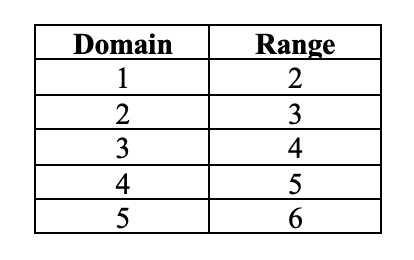
Immediately after you possess the domain and the range for the function, you need to graph the domain values on the X-axis and range values on the Y-axis.
How can you tell whether or not a Function is One to One?
To test if a function is one-to-one, we can leverage the horizontal line test. As soon as you graph the graph of a function, trace horizontal lines over the graph. If a horizontal line moves through the graph of the function at more than one point, then the function is not one-to-one.
Since the graph of every linear function is a straight line, and a horizontal line does not intersect the graph at more than one point, we can also reason that all linear functions are one-to-one functions. Keep in mind that we do not apply the vertical line test for one-to-one functions.
Let's study the graph for f(x) = x + 1. As soon as you graph the values to x-coordinates and y-coordinates, you need to review whether a horizontal line intersects the graph at more than one point. In this example, the graph does not intersect any horizontal line more than once. This indicates that the function is a one-to-one function.
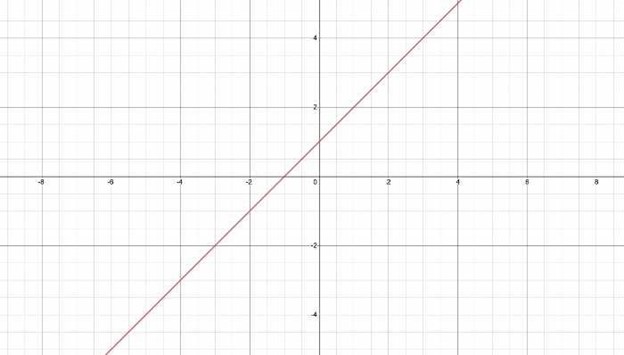
On the other hand, if the function is not a one-to-one function, it will intersect the same horizontal line multiple times. Let's examine the diagram for the f(y) = y^2. Here are the domain and the range values for the function:
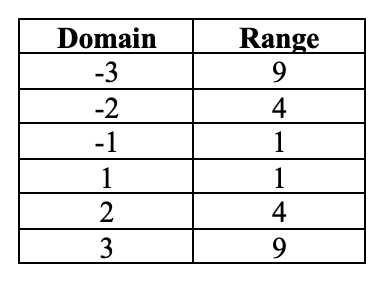
Here is the graph for the function:
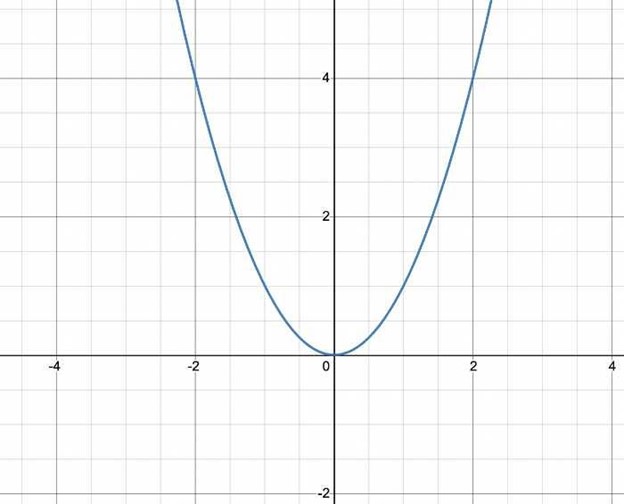
In this example, the graph intersects multiple horizontal lines. For example, for both domains -1 and 1, the range is 1. In the same manner, for each -2 and 2, the range is 4. This means that f(x) = x^2 is not a one-to-one function.
What is the inverse of a One-to-One Function?
As a one-to-one function has just one input value for each output value, the inverse of a one-to-one function also happens to be a one-to-one function. The opposite of the function essentially reverses the function.
For example, in the example of f(x) = x + 1, we add 1 to each value of x as a means of getting the output, i.e., y. The inverse of this function will deduct 1 from each value of y.
The inverse of the function is f−1.
What are the properties of the inverse of a One to One Function?
The properties of an inverse one-to-one function are the same as any other one-to-one functions. This means that the inverse of a one-to-one function will have one domain for each range and pass the horizontal line test.
How do you determine the inverse of a One-to-One Function?
Figuring out the inverse of a function is simple. You just have to change the x and y values. For instance, the inverse of the function f(x) = x + 5 is f-1(x) = x - 5.
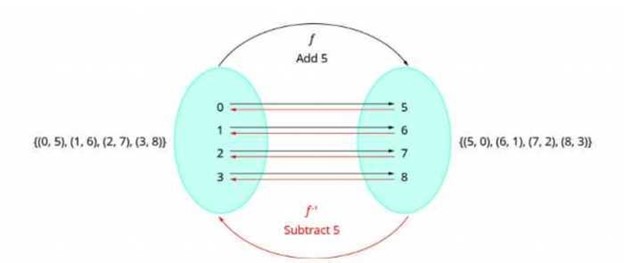
As we discussed before, the inverse of a one-to-one function reverses the function. Since the original output value showed us we needed to add 5 to each input value, the new output value will require us to deduct 5 from each input value.
One to One Function Practice Questions
Consider the following functions:
-
f(x) = x + 1
-
f(x) = 2x
-
f(x) = x2
-
f(x) = 3x - 2
-
f(x) = |x|
-
g(x) = 2x + 1
-
h(x) = x/2 - 1
-
j(x) = √x
-
k(x) = (x + 2)/(x - 2)
-
l(x) = 3√x
-
m(x) = 5 - x
For every function:
1. Identify whether the function is one-to-one.
2. Plot the function and its inverse.
3. Determine the inverse of the function numerically.
4. State the domain and range of every function and its inverse.
5. Employ the inverse to solve for x in each formula.
Grade Potential Can Help You Learn You Functions
If you are struggling using one-to-one functions or similar topics, Grade Potential can put you in contact with a 1:1 instructor who can help. Our Charlotte math tutors are skilled educators who help students just like you advance their mastery of these subjects.
With Grade Potential, you can learn at your unique pace from the comfort of your own home. Schedule a meeting with Grade Potential today by calling (704) 610-6275 to get informed about our teaching services. One of our representatives will contact you to better inquire about your requirements to provide you with the best instructor for you!




